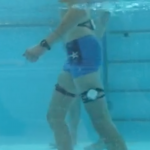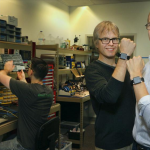MLS Cup – Analyzing the Portland Timbers
Soccer City USA has finally earned its name. The Portland Timbers have won the MLS cup for the first time in their history in a 2-1 victory over the Columbus Crew. The Timbers bring Portland the first title since 1977, when the Trail Blazers won the NBA Championship.
The Timbers showed promise after their Western Conference wins over FC Dallas, capitalizing on their quantity and quality of goal opportunities as well as their comeback ability, shown throughout their 2015 season. They brought the intensity early in the MLS final game against Crew SC, becoming the first Cascadia club to win the cup.
Taking a look at player performance allows coaches and athletes better insight into the game, making more accurate predictions of accuracy, energy exertion, and even injury prevention. Skill levels can be analyzed and strengths and weaknesses of each player and potential line-up can be scrutinized. APDM takes a closer look at several Timbers players to find the keys to their success.
Darlington Nagbe – Nagbe has impeccable timing. The midfielder has the ability to shift his weight exactly at the right time to allow him to easily manipulate defenders and find pockets of open movement that other players can’t. Using Opals to measure Nagbe’s acceleration can give him real-time feedback for cutting and exploding analysis.
Diego Valeri – Valeri is physically and mentally fast. His game is crisp, and his ability to settle the ball and fire accurate passes shows how quickly he can detect runners and open holes. Valeri’s Vestibular and Proprioceptive dependence can be measured by Mobility lab, allowing him to keep his eye-to-foot coordination strong.
Liam Ridgewell – As a strong defender and captain, Ridgewell holds down the roots of the Timbers field. He clears the ball out of dangerous areas, and is a foundational asset to the team. Using APDM Opals, it is possible to quantify Ridgewell’s optimal kicking angle by looking at his velocity, timing, and range of motion to make sure he clears the ball with accuracy.
Diego Chara – Overlooking his knack for fouling, Chara has the endurance the Timbers need in the middle of the field. While Opals can detect when Chara fatigues during game time, they can also detect his trunk rotation to make sure he isn’t losing forward momentum on the field.
Fanendo Adi – At 6’4, 185 lbs, Adi is a monster on the field. When he first came to the Timbers, he had to be trained not to dribble as much – his job was to get the ball and release the ball. He had to embrace his size and strength, and train accordingly. Coaches used Football blocking pads to pressure Adi while feeding him the ball. He learned to expect defensive pressure and use his body size to his advantage. Opals can detect Adi’s stability during times of defensive pressure, helping expose his remaining weaknesses.
Dairon Asprilla – Asprilla’s season was hit and miss, being one of the Timbers’ somewhat inconsistent players. This was party due to an ankle sprain that took the pep out of his game, leaving him to struggle until late in the season when he hit his stride. Take this goal for example. One important thing for coaches of any sport to consider is the return-to-play decision after an injury. Asprilla is one of many players that could benefit from rehabilitation analysis with Mobility Lab to make sure he is 100% before returning to the field to avoid further injury.
Big data for big-time players. APDM can provide the accurate analysis that MLS coaches and top players can understand. Custom solutions and movement quantification is already in use by top sports teams, giving them a winning advantage.





